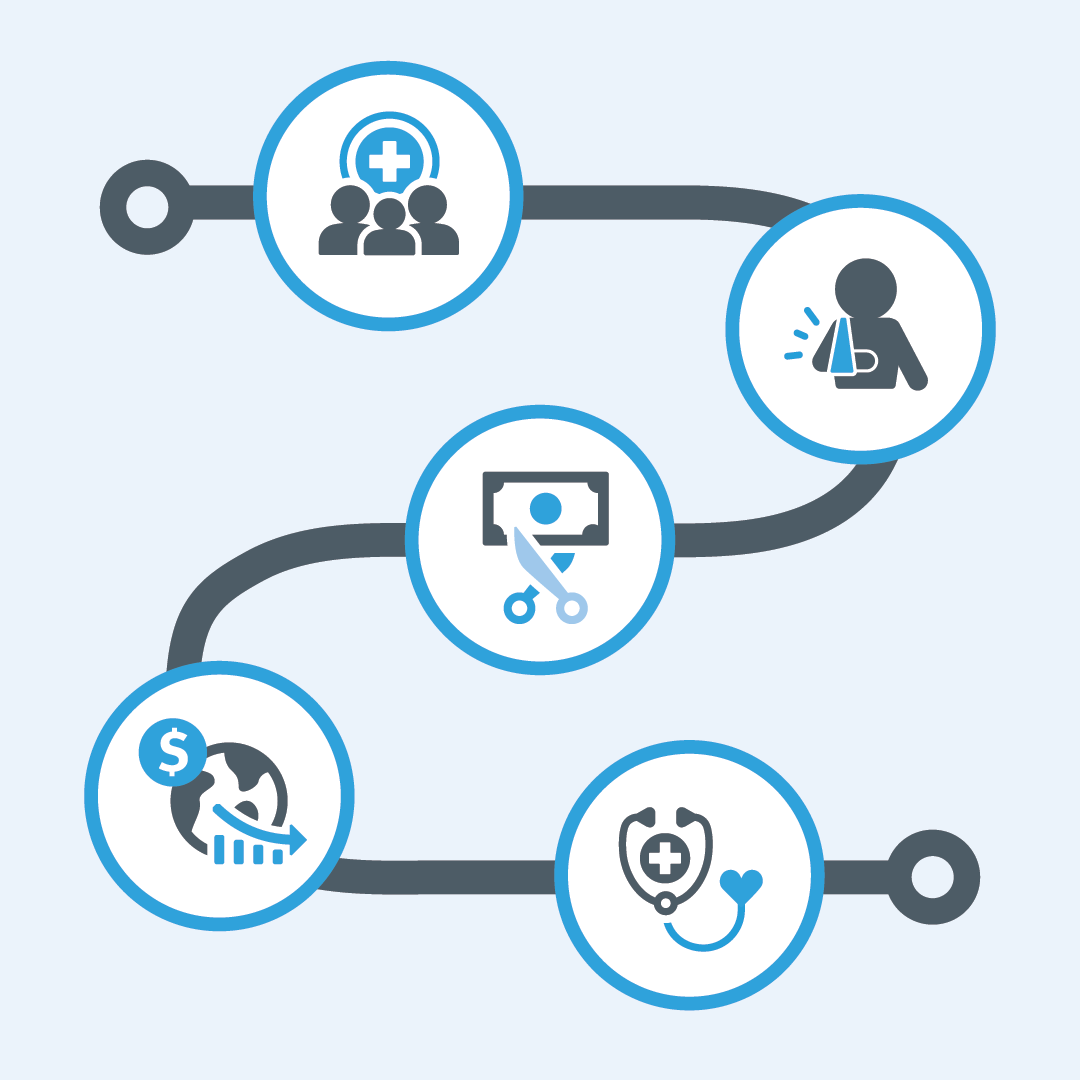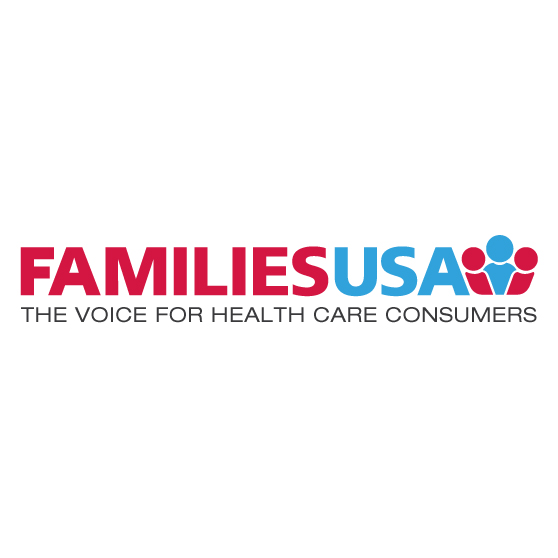Alaska’s Reinsurance 1332 Waiver: An Approach that Can Work
08.02.2017
The recent approval of Alaska’s 1332 waiver1 to fund a reinsurance system shows an approach that other states could also take under current law to lower premiums in their marketplaces and better distribute the costs of the very sick.
Alaska’s waiver will not change the way people with pre-existing conditions get care: people with pre-existing conditions will continue to enroll in the same plans as healthy people, receive all benefits, be charged the same premiums as healthy people, and receive premium credits and cost sharing reductions if eligible. However, the costs of their claims will be paid out of a pool financed by a wider set of payers, bringing down individual insurance premiums for everyone and stabilizing the marketplace: the pool is financed in part by an assessment across the broader state-regulated insurance system, including the group market, and will soon also receive federal funding through the waiver.
Other states may want to begin the process of proposing reinsurance under 1332 waivers now as it will take time to advance proposals and gain necessary approvals. This paper concludes with several questions that advocates and policymakers should ask themselves about state reinsurance proposals.
What problem did Alaska’s waiver address?
Alaska is a state with a relatively small market for individual insurance of about 22,000 people; in contrast, about 151,000 Alaskans get their coverage through large employers (that is, employers with more than 50 employees) which are either fully insured, self-insured, or part of a multi-employer arrangement.2 When the federal reinsurance program ended in 2016, Alaska’s relatively small number of individual market enrollees felt the full impact of high-cost enrollees’ claims. A small number of individuals with very high costs for conditions such as blood disorders, premature births, and severe cancers drove extremely high premium increases in the individual market.3 The state sought a better way to spread those costs both within the state and also to get assistance with these costs from the federal government.
How does Alaska’s reinsurance system work?
The state passed H.B. 374 in July 2016. Under that law, Alaska assesses all types of health insurers (individual, small group, large group, and stop-loss) to fund a reinsurance system, administered by Alaska Comprehensive Insurance Association, a nonprofit entity.* When an insurer in the individual market identifies an enrollee as having a designated high-cost condition, the insurer puts that enrollee’s premiums into the Association and the Association reimburses the insurer for that enrollee’s ongoing claims. None of this effects how the enrollee gets care. The enrollee is still enrolled in the health plan that he or she selected, charged the same premiums as everyone else, and still receives the same payment on his or her health care claims.
What is Reinsurance?
Reinsurance is a system to help insurance companies pay a portion of the cost of the highest insurance claims. Typically, for enrollees whose claims exceed a set threshold level, the original insurance company pays premiums to the reinsurer, and the reinsurer in turn pays all or part of the excess claims. Alternatively, reinsurance can be designed so that the original insurance company pays the premiums of everyone with certain high risk conditions to the reinsurer, and the reinsurer pays those enrollees’ claims.
Insurance companies often buy reinsurance policies from private companies, but governments can also provide reinsurance systems. By financing part of the highest-cost users’ claims, governments can bring down the cost of premiums for all enrollees. Unlike the high risk pools that predated the Affordable Care Act, reinsurance systems do not segregate high-cost people into separate plans – enrollees remain with their chosen insurer and the reinsurance system picks up part of the cost.
The Affordable Care Act provided a temporary reinsurance program that ended in 2016.8 Medicare Part D has a permanent reinsurance program in which the federal government pays for the majority of a Medicare enrollee’s drug expenses above a threshold.9
Before the reinsurance system was enacted, individual market premiums were projected to increase 42 percent in Alaska in 2017. Through the tax on all types of health insurance, Alaska generated $55 million to fund its reinsurance system in 2017 and was able to bring rate increases down to 7.3 percent in 2017.4
How does Alaska’s 1332 waiver bring federal funding into this?
The effect of Alaska’s reinsurance system is to lower premiums in the individual market. Since premiums are lower than they would be otherwise, the federal government does not need to pay as much to Alaska’s low and middle income residents through premium tax credits.
Under the Affordable Care Act, low and middle income families can get premium tax credits from the federal government for the difference between the full cost of premiums in marketplace plans and a percentage of their income. Since reinsurance lowers the full cost of premiums in Alaska, the federal government saves money.
Under Alaska’s waiver, this federal savings will be returned to the state reinsurance program, stabilizing the individual market for future years, reducing premiums by at least 4 percent, and relieving Alaska during a time when the state is under great fiscal pressure.5 In fact, Alaska’s individual market insurer has proposed a 22 percent decrease in its rates for 2018.6 Alaska will still contribute a small amount to the reinsurance system. Last year, the reinsurance program cost $55 million, and Alaska proposes to get $48 million from the federal government in federal savings. Alaska estimates that an additional 1650 people will enroll in coverage due to the waiver and reinsurance system’s effect in lowering premiums.7
What are the steps states must use to submit and gain approval of a similar 1332 waiver?
CMS provides a checklist as well as regulations, guidance, and information from state proposals on its “Section 1332: State Innovation Waivers” webpage. In broad terms, the process is:
- Develop a proposal. Provide actuarial and economic analyses of the proposal showing that coverage will remain at least as extensive, comprehensive, and affordable to enrollees as it would absent the waiver; and that the waiver will be deficit neutral to the federal government.
- Pass state legislation providing for a state-operated reinsurance program contingent upon federal approval of the waiver, seeking a pass-through of federal funding, and authorizing the state to pursue the waiver;
- Provide a public notice about the proposal and how to comment, allowing the public at least 30 days to comment.
- Hold at least two public hearings about the proposal, and report on the issues raised at the hearing and through public comments.
- If the state has one or more Federally-recognized Indian tribes, hold an official meeting between the state and the Tribal representatives, and report on the issues raised.
- Submit an application to the federal government.
- HHS/Treasury will conduct a preliminary review within 45 days and let the state know if the application is complete. The federal government will make its final determination within 180 days.
What other states are going this route?
Minnesota and Oklahoma have each passed legislation allowing their states to pursue a waiver and providing for a reinsurance system. Other states may also be considering reinsurance.
Tips for states and advocates:
- Begin the process early. It will take time to pass necessary legislation, do the economic modeling, and collect input on the proposal. Consult the federal government and consumer advocates while developing the plan.
- Ensure that premium credits and cost sharing reductions remain intact. This financial help serves a different purpose from reinsurance, ensuring that what people pay is affordable relative to their incomes. Income-based premium credits and cost sharing assistance will be needed under any scenario, and states and advocates should insist that people with modest and middle incomes receive as much financial protection as they do today.
- Work to assure the broadest funding possible. Especially if the state’s individual insurance market is small, risks should be spread broadly through all types of insurers including stop loss insurers and/or third party administrators for large self-funded plans. States can also consider other sources of state financing in addition to the federal funding provided through the waiver.
- Be wary of other provisions that could be added to a waiver proposal that might reduce benefits or make it harder for consumers to enroll in coverage. Currently, 1332 has guardrails to protect vulnerable populations and ensure that coverage remains as affordable and comprehensive to at least as many enrollees. Advocates should be vigilant to ensure that those guardrails are met.
- Weigh reinsurance against other options for assuring marketplace stability. Is the reinsurance funding stream that the state proposes going to last over the long term, or is it a solution only for a year or two – that is, if the state stops contributing, will federal funding also disappear? Is your state also thinking about requiring Medicaid managed care plans to serve the marketplace or any other type of options to reduce health care prices and attract plans? If so, you’ll want to weigh the pros and cons of each approach.
*The Alaska Comprehensive Health Insurance Association was originally established in 1997, well before the Affordable Care Act, as a high risk pool to provide insurance to people uninsurable due to their health. Since enactment of the ACA, it has continued to provide supplemental policies to the Medicare population. Its board and experience make it a good fit to administer the new reinsurance system.
Endnotes
1CMS summary, “Alaska: State Innovation Waiver under section 1332 of the PPACA,” July 11, 2017, https://www.cms.gov/CCIIO/Programs-and-Initiatives/State-Innovation-Waivers/Downloads/Fact-Sheet.pdf and July 7, 2017 approval letter from Seema Verma, Administrator of the Centers for Medicare and Medicaid Services, to Governor Bill Walker, Alaska, available at https://www.cms.gov/CCIIO/Programs-and-Initiatives/State-Innovation-Waivers/Downloads/Approval-Letter.pdf.
2Office of the Commissioner, “HB374: Reinsurance Program; Health Insurance Waivers,” Juneau, AK, Alaska Department of Commerce, Community and Economic Development, white paper, April 15, 2016, available at http://www.akleg.gov/basis/get_documents.asp?session=29&docid=66218.
3HB 374 Supporting Documents – Claims Data,” May 26, 2016, available at http://www.akleg.gov/basis/get_documents.asp?session=29&docid=66645.
4Letter from Governor Bill Walker to HHS Secretary Sylvia Burwell transmitting Alaska’s 1332 State Innovation Wiaver, December 29, 2016, available at https://www.cms.gov/CCIIO/Programs-and-Initiatives/State-Innovation-Waivers/Downloads/Alaska-Application-with-Attachments-51117.pdf.
5Ibid.
6Premera Blue Cross Blue Shield of Alaska Individual Rate Filing Effective 1/1/2018, submitted 7/13/2017 and available at https://ratereview.healthcare.gov.
7Letter from Governor Bill Walker, op cit.
8Cynthia Cox, et al, Explaining Health Care Reform: Risk Adjustment, Reinsurance, and Risk Corridors (DC: Kaiser Family Foundation, August 2016), available at http://www.kff.org/health-reform/issue-brief/explaining-health-care-reform-risk-adjustment-reinsurance-and-risk-corridors/.
9Tim Jost, “Shoring Up the Health Insurance Marketplaces: Learning from Medicare’s Drug Program,” Commonwealth Fund, April 7, 2017, available at http://www.commonwealthfund.org/publications/blog/2017/apr/shoring-up-the-health-insurance-marketplaces.




